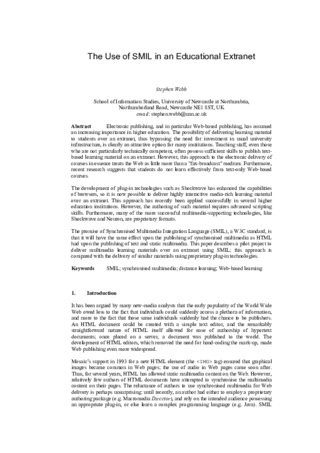Abstract Electronic publishing, and in particular Web-based publishing, has assumed an increasing importance in higher education. The possibility of delivering learning material to students over an extranet, thus bypassing the need for investment in usual university infrastructure, is clearly an attractive option for many institutions. Teaching staff, even those who are not particularly technically competent, often possess sufficient skills to publish text-based learning material on an extranet. However, this approach to the electronic delivery of courses in essence treats the Web as little more than a "fax-broadcast" medium. Furthermore, recent research suggests that students do not learn effectively from text-only Web-based courses. The development of plug-in technologies such as Shockwave has enhanced the capabilities of browsers, so it is now possible to deliver highly interactive media-rich learning material over an extranet. This approach has recently been applied successfully in several higher education institutions. However, the authoring of such material requires advanced scripting skills. Furthermore, many of the more successful multimedia-supporting technologies, like Shockwave and Neuron, are proprietary formats. The promise of Synchronised Multimedia Integration Language (SMIL), a W3C standard, is that it will have the same effect upon the publishing of synchronised multimedia as HTML had upon the publishing of text and static multimedia. This paper describes a pilot project to deliver multimedia learning materials over an extranet using SMIL; this approach is compared with the delivery of similar materials using proprietary plug-in technologies.
Webb, Stephen. "THE USE OF SMIL IN AN EDUCATIONAL EXTRANET." In Electronic Publishing 2000. Electronic Publishing in the Third Millenium: Proceedings of an ICCC/IFIP Conference. ELPUB. Washington D.C.: ICCC Pres, 2000.
Conference held at Kaliningrad/Svetlogorsk, Russia
